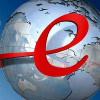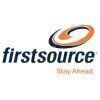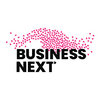IT Administrator
70+ IT Administrator Interview Questions and Answers

Asked in 2COMS

Q. how rdp work, how you will setup samba server, or nfs server, backup, recovery, they will ask about RAID and other thing. yes they have also windows server and linux server. you should have good knowledge about...
read moreRDP, Samba, NFS, RAID, backup, recovery, Windows and Linux servers.
RDP allows remote access to a computer's desktop.
Samba is used for file and printer sharing between Linux and Windows systems.
NFS is a file sharing protocol used in Unix/Linux systems.
RAID is a data storage technology that combines multiple disks into a single logical unit.
Backup and recovery are essential for data protection and disaster recovery.
Windows and Linux servers require different configurations and ...read more

Asked in 2COMS

Q. if you have one system if it's not working what you will do..? And you don't have knowledge about that tech that is not working..? what will you do..?
I would follow a troubleshooting process to identify the issue and seek assistance from colleagues or online resources if necessary.
Check for any error messages or alerts
Attempt to restart the system
Research the issue online or consult documentation
Seek assistance from colleagues or IT support
If necessary, escalate the issue to higher-level support
IT Administrator Interview Questions and Answers for Freshers

Asked in Wipro

Q. What is Active Directroy ? What is WLAN WAN ? How to Configure router ?
Active Directory is a Microsoft service that manages network resources and user accounts. WLAN WAN is a wireless network technology. Router configuration involves setting up network settings and security protocols.
Active Directory is used to authenticate and authorize users and computers in a network
WLAN WAN is a wireless network that connects devices over a wide area network
Router configuration involves accessing the router's web interface, setting up network settings such a...read more
Asked in Saurashtra Freight

Q. how to connect network printer in our network area how to change pc hardware how to make a patch code color code
To connect a network printer, change PC hardware, and create patch code color code, follow these steps.
Connect the network printer to the network by assigning it a static IP address or using DHCP.
Install the printer drivers on the PCs that need to access the printer.
To change PC hardware, power off the PC, open the case, remove or replace the hardware component, and close the case.
To create a patch code color code, use a color-coding system to identify different types of patc...read more

Asked in Ellsworth Adhesives

Q. What are pst and ost? What's the difference between them
PST and OST are file formats used by Microsoft Outlook to store email data. PST is a personal storage table and OST is an offline storage table.
PST is used for storing email data on the local computer
OST is used for storing email data when working in offline mode
PST files can be imported and exported to transfer email data between computers
OST files are automatically created when using Outlook in cached mode
PST files have a maximum size limit of 50GB in Outlook 2010 and later...read more

Asked in Ellsworth Adhesives

Q. Port number for FTP, SSH,SMTP, DNS, DHCP, HTTP, HTTPS, POP3, IMAP?
Port numbers for common network protocols.
FTP - Port 21
SSH - Port 22
SMTP - Port 25
DNS - Port 53
DHCP - Port 67/68
HTTP - Port 80
HTTPS - Port 443
POP3 - Port 110
IMAP - Port 143
IT Administrator Jobs




Asked in Pantaloons

Q. What do you know about Active Directory in system administration?
Active Directory is a centralized database that stores information about network resources and enables users to access and manage them.
Active Directory is a service provided by Microsoft for Windows domain networks.
It stores information about users, computers, groups, and other network resources.
It allows administrators to manage and secure network resources, set policies, and deploy software.
Active Directory uses a hierarchical structure with domains, trees, and forests to o...read more

Asked in PaywithRING

Q. Do you know how to install Windows and Linux OS?
Yes, I am familiar with the installation process of both Windows and Linux operating systems.
For Windows, I am familiar with the installation process using a bootable USB or DVD, and can navigate through the installation wizard to configure settings such as language, time zone, and user accounts.
For Linux, I have experience with various distributions such as Ubuntu, CentOS, and Debian, and can install them using a bootable USB or DVD, or through virtualization software such a...read more
Share interview questions and help millions of jobseekers 🌟


Asked in Wipro

Q. How do you extract the MAC address details of current and remote devices?
To extract MAC address details of current and remote devices, use command line tools like ipconfig or ifconfig.
Use ipconfig command in Windows to view MAC address details of current device
Use ifconfig command in Linux to view MAC address details of current device
For remote devices, use tools like Nmap to scan the network and retrieve MAC address details

Asked in Meon Technologies

Q. What steps would you take to troubleshoot a network outage in an office environment?
Troubleshooting a network outage involves systematic checks to identify and resolve connectivity issues.
Check physical connections: Ensure all cables are securely connected and devices are powered on.
Verify network status: Use command line tools like 'ping' to check connectivity to the router and external sites.
Inspect network devices: Check the status of switches, routers, and firewalls for any alerts or errors.
Review network configuration: Ensure that IP addresses, subnet m...read more
Asked in Ethnotech Academic Solutions

Q. What is the concept of a firewall and how does it relate to network security?
A firewall is a network security device that monitors and controls incoming and outgoing network traffic based on predetermined security rules.
Firewalls can be hardware-based, software-based, or a combination of both.
They act as a barrier between trusted internal networks and untrusted external networks, such as the internet.
Firewalls filter traffic based on rules, allowing or blocking data packets based on IP addresses, protocols, and ports.
For example, a firewall can block ...read more

Asked in Firstsource Solutions

Q. What is the OSI model and can you explain its layers?
The OSI model is a conceptual framework for understanding network communication across different systems.
Layer 1: Physical - Deals with the physical connection (e.g., cables, switches).
Layer 2: Data Link - Manages node-to-node data transfer (e.g., Ethernet).
Layer 3: Network - Handles routing of data (e.g., IP addresses).
Layer 4: Transport - Ensures complete data transfer (e.g., TCP, UDP).
Layer 5: Session - Manages sessions between applications (e.g., APIs).
Layer 6: Presentati...read more

Asked in Meon Technologies

Q. How do you manage user permissions and access control in a Windows server environment?
Effective user permissions management ensures security and proper access in a Windows server environment.
Utilize Active Directory (AD) for centralized user management and group policies.
Implement Role-Based Access Control (RBAC) to assign permissions based on user roles.
Regularly review and audit user permissions to ensure compliance and security.
Use Access Control Lists (ACLs) to define permissions for files and folders.
Employ Group Policy Objects (GPOs) to enforce security ...read more

Asked in Wipro

Q. What monitoring tools have you used for customer service?
Monitoring tools for customer service include Zendesk, Freshdesk, and Salesforce Service Cloud.
Zendesk is a popular customer service software that offers ticketing, self-service options, and reporting capabilities.
Freshdesk provides a helpdesk ticketing system, knowledge base, and automation tools for customer support.
Salesforce Service Cloud is a customer service platform that integrates with Salesforce CRM to provide a complete view of customer interactions.

Asked in Ascentis

Q. How would you manage multiple tickets at the same time?
I prioritize, categorize, and communicate effectively to manage multiple IT tickets efficiently.
Prioritize tickets based on urgency and impact, e.g., critical system outages take precedence over minor issues.
Use a ticketing system to categorize and track progress, ensuring no ticket is overlooked.
Set specific time blocks for addressing tickets, allowing for focused work without constant interruptions.
Communicate with users to manage expectations, providing updates on ticket s...read more

Asked in Universal Autofoundry

Q. New system configuration and installation, manage server rack,
I have experience in configuring and installing new systems and managing server racks.
I am familiar with various operating systems and can configure them according to the requirements.
I have experience in setting up virtual machines and containers.
I am proficient in managing server racks and ensuring proper cooling and power supply.
I can troubleshoot hardware and software issues and perform regular maintenance tasks.
I am familiar with network protocols and can configure firew...read more
Asked in Saurashtra Freight

Q. what is domain and howto join client and domain configration
A domain is a network of computers that are managed by a central authority. Joining a client to a domain involves configuring the client to communicate with the domain controller.
A domain is a group of computers that share a common security and administration policy.
To join a client to a domain, you need to have administrative privileges on both the client and the domain controller.
The client needs to be configured to use the domain controller's DNS server for name resolution...read more
Asked in Saurashtra Freight

Q. Where are you from, and can you describe your experience?
I am from New York with 5 years of experience in IT administration, specializing in network security and system maintenance.
From New York
5 years of experience in IT administration
Specialize in network security and system maintenance

Asked in Ascentis

Q. What is the minimum time to resolve the tickets ? What is SLA ?
SLA defines the minimum time to resolve tickets, ensuring timely support and service delivery in IT environments.
Definition of SLA: Service Level Agreement (SLA) is a contract that outlines the expected service levels between a service provider and a client.
Minimum Resolution Time: The minimum time to resolve tickets can vary based on the SLA; for example, critical issues may have a 1-hour resolution time.
Priority Levels: SLAs often categorize tickets by priority (e.g., P1 fo...read more

Asked in PaywithRING

Q. Have you configured Microsoft Outlook before?
Yes, I am able to configure Microsoft Outlook.
I am familiar with setting up email accounts in Outlook
I can troubleshoot common issues with Outlook
I am able to configure Outlook for use with Exchange servers
I am knowledgeable about configuring Outlook for remote access

Asked in Ellsworth Adhesives

Q. How do you create a rule in a firewall?
To create a rule in firewall, follow these steps:
Open the firewall settings
Click on 'Add Rule' or 'New Rule'
Select the type of rule you want to create (inbound/outbound)
Specify the protocol, port number, and IP address
Choose the action to be taken (allow/block)
Give a name to the rule and save it

Asked in Indian Army

Q. What meaning domain? What is tha dhcp servers? What is the ip?
A domain is a group of computers and devices that are interconnected and share a common set of rules and procedures.
A domain is a logical grouping of network resources, such as computers, printers, and servers.
It allows users to access resources and services on the network using a unique domain name.
Domains are managed by domain controllers, which authenticate users and enforce security policies.
Examples of domain names include microsoft.com, google.com, etc.

Asked in BUSINESSNEXT

Q. What is Active Directory Domain Services?
Active Directory Domain Services (AD DS) is a Microsoft technology for managing users, computers, and resources in a network.
AD DS provides a centralized location for network management and security.
It allows for the creation of user accounts and groups, enabling easier access control.
AD DS uses a hierarchical structure, including domains, trees, and forests.
Group Policy Objects (GPOs) can be applied to manage user and computer settings across the network.
Example: An organiza...read more

Asked in New Opportunity Consultancy

Q. What are your IT strengths and weaknesses?
My IT strengths include strong troubleshooting skills and knowledge of various operating systems. My weakness is that I sometimes struggle with time management.
Strong troubleshooting skills
Knowledge of various operating systems
Occasionally struggle with time management

Asked in Tata Steel

Q. What do you mean by networking?
Networking refers to the process of connecting two or more devices together to share resources and information.
Networking involves the use of hardware and software to establish connections between devices.
It allows for the sharing of resources such as printers, files, and internet access.
Networking can be done through wired or wireless connections.
Examples of networking technologies include Ethernet, Wi-Fi, and Bluetooth.
Networking is essential for communication and collabora...read more

Asked in PaywithRING

Q. Are you familiar with IT Audit?
Yes, IT Audit is the process of evaluating an organization's IT infrastructure, policies, and operations to ensure they align with business goals.
IT Audit involves reviewing security measures, data management practices, and compliance with regulations.
It helps identify potential risks and vulnerabilities in the IT system and recommends solutions to mitigate them.
Examples of IT Audit include network security assessments, vulnerability scans, and penetration testing.
IT Audit is...read more

Asked in PaywithRING

Q. Are you familiar with patch management?
Yes, I am familiar with patch management.
Patch management involves the process of identifying, acquiring, testing, and installing patches or updates to software applications and operating systems.
It is important for maintaining the security and stability of IT systems.
Patch management can be done manually or through automated tools.
Examples of patch management tools include Microsoft SCCM, IBM BigFix, and SolarWinds Patch Manager.

Asked in PaywithRING

Q. Are you familiar with user rights?
Yes, I am familiar with user's rights.
I understand the different levels of access and permissions that users may have.
I am aware of the importance of protecting user data and privacy.
I am knowledgeable about user authentication and authorization processes.
I am familiar with industry standards and best practices for managing user rights.

Asked in PaywithRING

Q. Do you have knowledge of Admin Rights?
Yes, I am familiar with Admin Rights.
Admin Rights refer to the level of access and control granted to an administrator on a computer system or network.
Admin Rights allow an administrator to perform tasks such as installing software, changing system settings, and managing user accounts.
Admin Rights should be granted only to trusted individuals to prevent unauthorized access or damage to the system.
Examples of Admin Rights include Windows Administrator, Linux root user, and Act...read more
Asked in Ridhira Group

Q. Can you describe your previous experience?
I have over five years of experience managing IT infrastructure, supporting users, and ensuring system security and efficiency.
Managed a network of over 200 devices, ensuring optimal performance and security.
Implemented a new ticketing system that reduced response time by 30%.
Conducted regular system audits and vulnerability assessments to enhance security.
Provided training sessions for staff on new software and security protocols.
Interview Questions of Similar Designations
Interview Experiences of Popular Companies





Top Interview Questions for IT Administrator Related Skills

Calculate your in-hand salary
Confused about how your in-hand salary is calculated? Enter your annual salary (CTC) and get your in-hand salary


Reviews
Interviews
Salaries
Users










